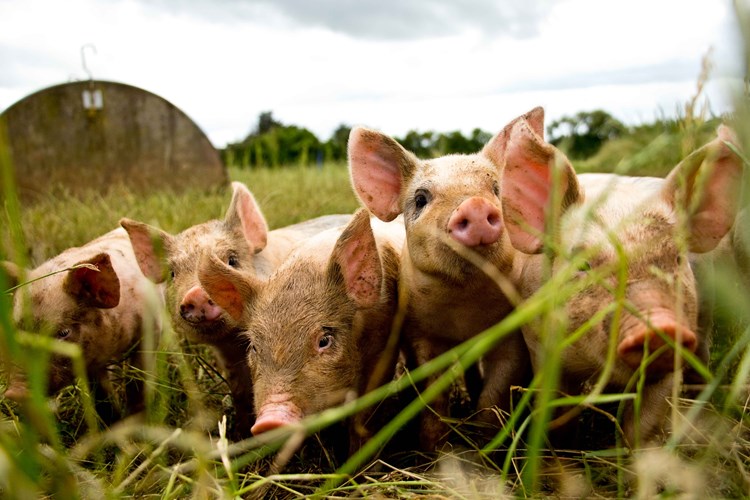From a blog written by Cóilín Nunan, the Alliance's Scientific Adviser, first published on the Soil Association website 29.04.20
Where did the new coronavirus come from and was its emergence caused by human activity?
Why are infectious disease outbreaks in humans, such as SARS, MERS, swine flu and now Covid-19 becoming increasingly frequent? Is it reasonable to expect ever-more epidemics if we continue with business as usual once Covid-19 has passed?
These are questions that scientists are still grappling with and so far there are few clear answers.
Most scientists agree that the coronavirus causing the current pandemic is likely to have originated in wild animals.
Bats, which can harbour hundreds of different types of coronavirus, are considered the most probable original reservoir, but are in hibernation in winter time in China when the pandemic began, so direct transfer to humans seems improbable. Also, although a closely related strain of coronavirus has been found in bats, it is not considered to be sufficiently genetically similar to the pandemic strain, so it is suspected that the virus may have passed through an “intermediate” species, where it may have mutated, before it reached humans.
It has been widely reported that the pandemic began at a seafood market in Wuhan which had a section selling meat from wild animals, but we now know that three of the four first cases recorded, including the first known case, had no connection to the market, making some scientists doubt this was the true origin of the pandemic, even though an early outbreak certainly occurred there.
It was also thought a couple of months ago that pangolins, which can be hunted and sometimes farmed in China for their meat and scales, had been identified as the intermediate species which passed on the virus to humans. But the link is currently considered unproven despite some closely related coronaviruses having been found in the animals.

Habitat and biodiversity loss
As with SARS, MERS and Ebola outbreaks, wildlife appears to be involved in the emergence of Covid-19.
Increasingly scientists argue that the growing number of pathogens transferring to humans from wildlife can be explained by biodiversity loss – population growth, road building, logging and mining are disrupting habitats and causing wild animals to become crowded together and to come into closer contact with human settlements, creating more opportunity for disease transmission.
The expansion of agriculture, however, is the main cause of habitat and biodiversity loss, with forests often cleared for pasture or to grow cash crops, including feed for industrially farmed livestock.
According to the Food and Agriculture Organisation, 80% of deforestation is due to forest being converted to agricultural land, and this habitat destruction caused by farming is being blamed for the emergence of new pathogens in humans. In Australia, for example, agricultural expansion and habitat destruction have been linked to the emergence of several-bat associated viruses as human pathogens.
Could livestock also be more directly involved in the coronavirus pandemic? So far there is no evidence that the new coronavirus originated from or is even able to infect livestock, but much more research is needed before we can be sure.
Viruses need to be able to attach themselves to the cells of a particular animal in order to penetrate the cells, reproduce and spread. If the cells do not have a site that the virus can bind to, the virus is unable to infect that species.
Scientists who have examined the genetic sequence of the new coronavirus, and used knowledge about how the closely related SARS virus binds to human and some other cells, have predicted that the virus causing Covid-19 may also be able to bind to the cells of animals such as cats, ferrets and, perhaps importantly, pigs.
However, a study which attempted to experimentally infect small numbers of various animals with the new virus was unable to infect pigs, chickens or dogs, although cats and ferrets were infected. Veterinary departments in China have also carried out some testing of pigs, poultry and dogs and have not found the virus, but it is unclear how much testing has been done, and since other studies have already found positives in dogs the same could still occur for livestock.
Some scientists are calling for much more surveillance of livestock, and in particular of pigs, to determine whether the new virus can spread in these animals, and from them to humans.
One reason for the focus on pigs is that coronaviruses are well-known to be the cause of significant disease problems in intensively farmed pigs, and new strains are emerging.
In 2018, Chinese scientists reported that a new coronavirus (not the virus causing Covid-19) had jumped from bats to pigs and had caused the death of 25,000 piglets. They warned that it was possible that it might transmit “to humans in the future”.
Another group of Chinese scientists writing about the same issue in 2018 said that “it is important to assess whether pigs could be mixing vessels for the emergence of novel coronaviruses with high agricultural impact and risks to public health”.
Similarly, Italian scientists recently highlighted the silent, subclinical circulation of different types of coronaviruses in Italian intensive pig farms which they warned could, through “recombination”, lead to the emergence of potential epidemic strains which “might present a risk to animals and, potentially, to human health”. The Italian scientists said the attempts to find the origin of the Covid-19 virus in China should include testing in domestic animals.

Viruses mutating and jumping from pigs to humans is not just a theoretical risk. The 2009-2010 swine-flu pandemic was caused by a virus which circulated in pigs for years, and then recombined with other flu viruses and made the species jump to humans. The swine flu pandemic ultimately killed between 150,000 and 575,000 people according to a study co-authored by scientists from the US government’s Center for Disease Control and Prevention.
We also know of cases of viruses migrating from bats to intensively farmed pigs and then from pigs to humans. The emergence of Nipah virus in Malaysia in 1999 was associated with the increased size and density of commercial pig farms and their encroachment into forested areas. The movement of pigs for sale and slaughter, in turn, led to the rapid spread of infection to southern peninsular Malaysia, where the high-density pig populations transmitted the virus to humans.
The intensive livestock industry sometimes claims that the trend towards highly concentrated indoor systems is actually safer than more traditional, free-range or pasture-based farming. It is argued that animals kept outdoors are more likely to come into contact with wildlife and acquire new and potentially harmful viruses or bacteria. Intensive farmers say they use high levels of “biosecurity” to keep wildlife and infections out of their barns, and this is safer for the animals and ultimately safer for us too.
In reality, animals kept in highly concentrated indoors systems are often much more prone to disease problems caused by various bacteria and viruses. Many bacterial respiratory and intestinal diseases affect intensively farmed pigs, poultry and cattle which is why an estimated 66% of all antibiotics used worldwide are used in livestock. Other forms of mass medication, such as coccidiostats in poultry feed and zinc oxide in piglet feed, are used routinely in an attempt to control diseases considered nearly unavoidable in highly concentrated indoor systems, demonstrating that disease remains a major problem in such systems, despite biosecurity.

The overuse of antibiotics in human medicine and in livestock has contributed to large increases in antibiotic resistance, threatening not just our ability to treat infectious disease but to carry out medical procedures such as surgery or cancer chemotherapy. The 2016 government-commissioned O’Neill Review forecast that, if we don’t reduce our use of antibiotics in human and veterinary medicine, there could be 10 million deaths a year worldwide due to antibiotic resistance by 2050 and that the cumulative direct and indirect cost of antibiotic resistance to the world economy by then will be about three years of current world GDP.
Fortunately, antibiotic use in UK farming has been cut by 50% in recent years, but much greater reductions here and abroad are still needed. Antibiotic use in organic animals and other animals raised on pasture tends to be far lower so a move to less intensive livestock production and lower levels of meat consumption will be required.
Viral infections, such as avian and swine flu, infections caused by coronaviruses, Porcine reproductive and respiratory syndrome and more recently African Swine Fever which has decimated the Chinese pig industry, can also have a major health and economic impact on intensive livestock production, with many new strains emerging in recent decades.
Fortunately, most viruses affecting animals cannot be transmitted to humans, but scientists say that keeping very large numbers of genetically similar animals in close confinement allows viruses to keep on circulating, increasing the number of variants until eventually one emerges that is able to jump species. The misuse of antibiotics in livestock can, therefore, be seen as not just contributing to antibiotic resistance but, by enabling us to keep large numbers of animals in these conditions, to the possible emergence of new viral pathogens too.
A 2016 United Nations Environment Programme report said that dramatic reductions in biodiversity and natural ecosystems had increased the opportunities for disease emergence. It also said that animals from highly concentrated indoor systems were particularly vulnerable to disease spread because of the “monoculture effect” of keeping high numbers of animals which lack genetic diversity in close proximity to each other. As a result, intensively farmed livestock were especially likely to act as an “epidemiological bridge between wildlife and human infections”.
Despite the many unanswered questions which remain, some conclusions are already very clear. Protecting our own health and building resilience means protecting biodiversity and the health of wildlife and of our livestock. A healthy ecosystem supporting a diversity of species can reduce the range and speed of disease spread and so reduce the likelihood of pandemics.
Health and resilience must now be put at the centre of our farming systems to help safeguard antibiotics and avoid hugely damaging disease outbreaks. But if instead, we choose a future of increasing monocultures of industrially farmed animals, it may only be a question of time before we are faced with the next pandemic.
---
A webinar on 10/06.20 hosted by India's Centre for Science and Environment included a presentation from the Alliance's Scientific Adviser Cóilín Nunan.
Cóilín features from 50:30
Download the slides from the presentation here.
Back to The Issue